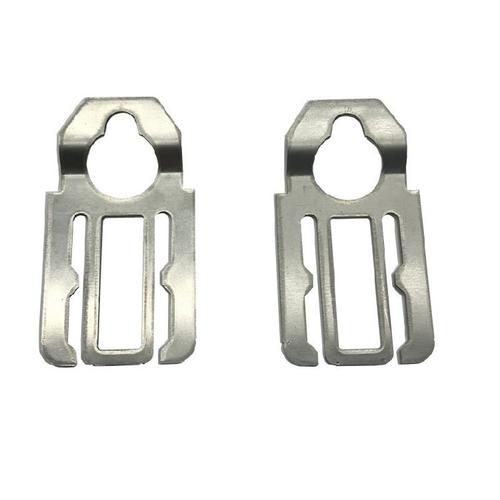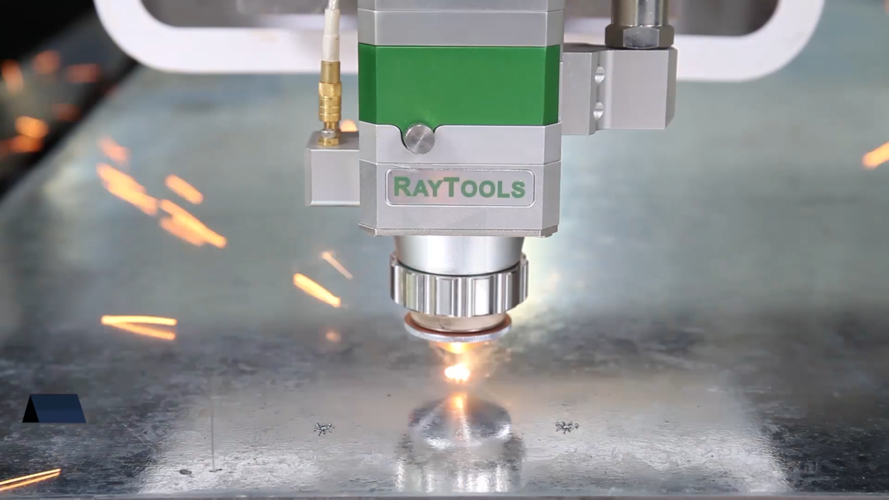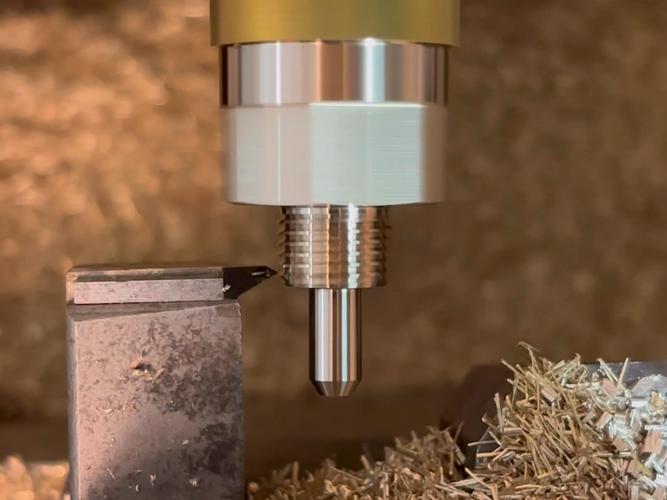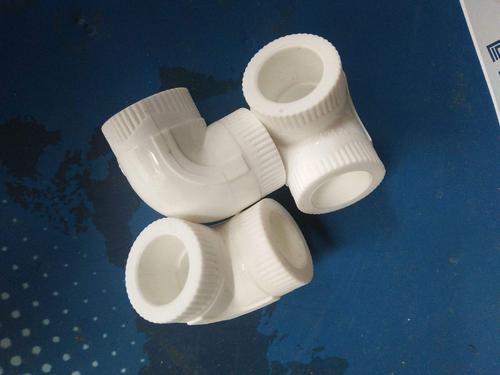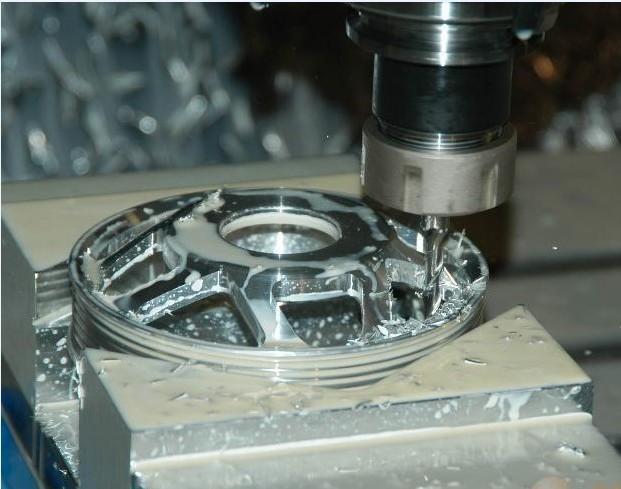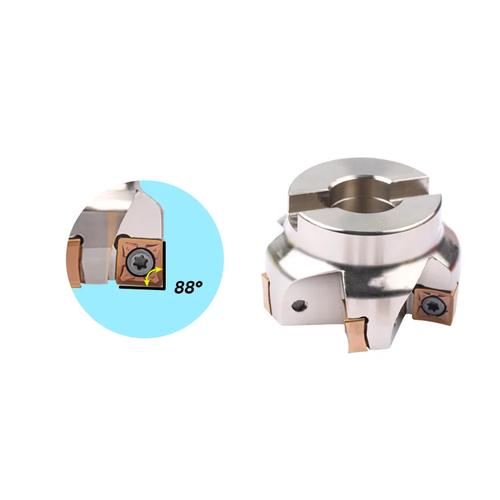
1. Core Definition: What Makes the CNC Cut Method Unique?
- Digital Design Input: Every cut starts with a 2D/3D digital model (created via CAD software like SolidWorks or Fusion 360). This model defines the part’s shape, dimensions, and tolerance (e.g., “a 50mm×30mm aluminum plate with 4 holes of 5mm diameter, ±0.01mm precision”).
- Machine Code Translation: A CAM (Computer-Aided Manufacturing) program converts the CAD model into G-code (the “language” of CNC machines)—a series of numerical commands that tell the machine where to move the tool, how fast (feed rate), and how deep (cut depth). For example, a G-code line like G01 X25 Y15 Z-3 F500 means: “Move the tool linearly to X=25mm, Y=15mm, cut 3mm deep, at 500mm/min speed.”
- Automated Tool Movement: The CNC machine’s servo motors (high-precision motors) execute the G-code, moving the cutting tool (or workpiece) along pre-defined axes (X, Y, Z for 3-axis; up to 5 axes for complex parts). This eliminates human error—even for 24/7 production runs, every part is identical.
2. The 5 Main Types of CNC Cut Methods (With Use Cases)
|
CNC Cut Method Type
|
How It Works (Material Removal Mechanism)
|
Ideal Materials
|
Precision Range
|
Key Use Case Example
|
|
1. CNC Laser Cutting
|
Uses a high-powered laser beam (CO₂, fiber, or Nd:YAG) to melt, vaporize, or burn through material. No physical contact with the workpiece.
|
Thin metals (0.1–20mm: steel, aluminum), plastic, acrylic, wood, fabric
|
±0.005–0.1mm
|
Cutting intricate patterns in stainless steel medical device housings; creating custom acrylic signage.
|
|
2. CNC Plasma Cutting
|
Generates a superheated plasma arc (10,000–30,000°C) to ionize gas (e.g., nitrogen, oxygen), which blasts through conductive materials (metals).
|
Thick metals (20–100mm: steel, stainless steel, copper)
|
±0.1–0.5mm
|
Cutting large steel plates for construction cranes; fabricating truck frame components.
|
|
3. CNC Waterjet Cutting
|
Uses a high-pressure stream (30,000–90,000 PSI) of water mixed with abrasives (e.g., garnet) to erode material. No heat is generated.
|
Heat-sensitive materials (glass, stone, titanium), thick metals (up to 300mm), composites
|
±0.02–0.1mm
|
Cutting titanium aerospace parts (avoids heat-induced warping); shaping marble countertops for luxury homes.
|
|
4. CNC Milling Cutting
|
Uses rotating endmills (flat, ball-nose, or chamfered) to “carve” material— the workpiece stays fixed, and the tool moves along X/Y/Z axes.
|
3D parts in metal (aluminum, steel), plastic (ABS, nylon), wood
|
±0.005–0.05mm
|
Machining aluminum engine blocks for cars; creating plastic smartphone cases.
|
|
5. CNC Turning Cutting
|
Rotates the workpiece at high speed while a stationary cutting tool trims material from the outer/inner surface. Ideal for cylindrical parts.
|
Round components in metal (steel, brass), plastic
|
±0.005–0.02mm
|
Manufacturing stainless steel bolts for industrial machinery; making brass musical instrument valves.
|
3. Step-by-Step Workflow of the CNC Cut Method (From Design to Part)
Step 1: Define Part Requirements (Pre-Design)
- Material: Will it be aluminum (lightweight) or steel (strong)? Thin acrylic (0.5mm) or thick titanium (50mm)?
- Tolerance: Does the part need ±0.01mm precision (aerospace) or ±0.5mm (construction)?
- Finish: Does it need smooth edges (consumer products) or can it have minor burrs (industrial brackets)?
Step 2: Create a CAD Model
Step 3: Generate CAM Program & G-Code
- Select the CNC cut method (e.g., “laser cutting” for the aluminum shield).
- Set tool parameters (e.g., laser power: 50W; feed rate: 300mm/min for 2mm aluminum).
- Optimize tool paths (e.g., “nesting” multiple shield designs on one metal sheet to reduce waste).
Step 4: Prepare the Machine & Material
- Tool Setup: Install the correct cutting tool (e.g., a 50W fiber laser head for aluminum; a 6mm endmill for milling).
- Material Securing: Clamp, vacuum, or fixture the raw material to the machine’s worktable. For thin aluminum sheets (2mm), use a vacuum table to avoid bending; for thick steel, use a vice.
- Calibration: Use a probe (sensor) to set the “work offset”—telling the machine where the material starts (e.g., “X=0, Y=0 at the top-left corner of the aluminum sheet”).
Step 5: Execute the Cut (Automated Phase)
- Reads G-code line by line.
- Moves the tool/workpiece along the programmed path.
- Monitors for errors (e.g., a laser cutting machine will pause if the material shifts; a waterjet will alert if abrasive levels are low).
Step 6: Post-Cut Inspection & Finishing
- Inspection: Use tools like calipers (for simple dimensions), micrometers (for thickness), or a CMM (Coordinate Measuring Machine) for 3D parts to verify compliance with the CAD model.
- Finishing: Remove burrs (with a deburring tool), polish (for consumer parts), or coat (e.g., anodize aluminum to prevent rust).
4. How the CNC Cut Method Differs From Traditional Cutting Methods
|
Aspect
|
CNC Cut Method
|
Manual Cutting (e.g., Hand Saw, File)
|
Manual Machine Cutting (e.g., Manual Mill)
|
|
Accuracy
|
Repeatable (±0.005–0.5mm)
|
Inconsistent (±1–5mm)
|
Dependent on operator skill (±0.1–1mm)
|
|
Efficiency
|
Fast (e.g., 100 aluminum shields/hour)
|
Slow (e.g., 5 shields/hour)
|
Moderate (e.g., 20 shields/hour)
|
|
Complexity
|
Handles intricate shapes (curves, holes)
|
Limited to simple straight cuts
|
Can do basic 3D cuts but no complex paths
|
|
Waste
|
Low (5–10% material waste)
|
High (20–30% waste from errors)
|
Moderate (10–15% waste)
|
5. Common Myths About the CNC Cut Method (Debunked)
Myth 1: “The CNC cut method is just ‘laser cutting’.”
Myth 2: “CNC cutting is too expensive for small businesses.”
Myth 3: “You need to be a ‘tech expert’ to use CNC cutting.”
6. Conclusion: Why the CNC Cut Method Is Indispensable Today
- Aerospace engineers rely on its ±0.005mm precision for jet engine parts.
- Medical device makers use waterjet CNC cutting to create titanium implants that fit patients perfectly.
- Small businesses use desktop CNC laser cutters to turn custom designs into profitable products (e.g., personalized wooden coasters).

